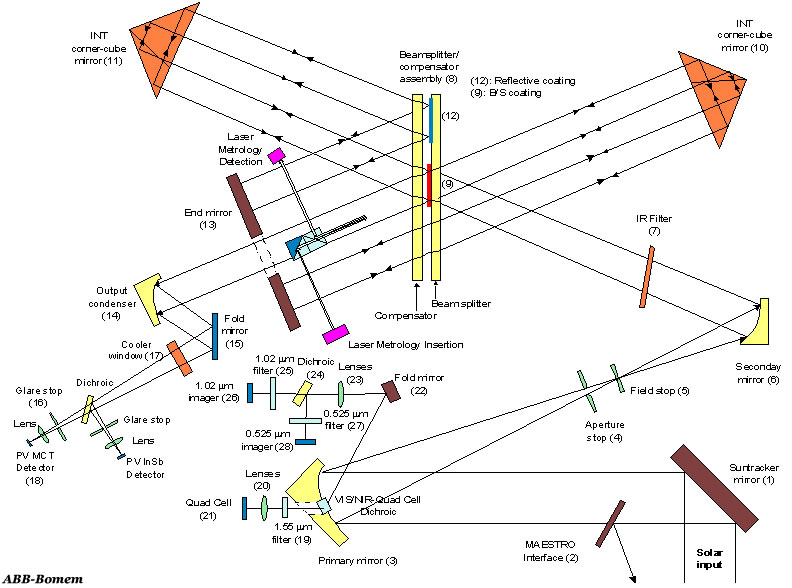
Why do you see the different colors? What would you measure if you detect the intensity of light at one point in the image as you change the pathlength of an interferometer arm, and why?
2. When white light is used in a Michelson interferometer, the following image on the left is produced at the output port:

Why do you see the different colors? What would you measure if you detect the intensity of light at one point in the image as you change the pathlength of an interferometer arm, and why?
3. Explain how this interferometer works:

What kind of interferometer is it? What do the corner-cubes do?
4. When 1 micron wavelength light is passed through a two-slit (Young) interferometer, an interference pattern results on a screen 1m away. If the fringe spacing is 1mm, what is the slit separation?